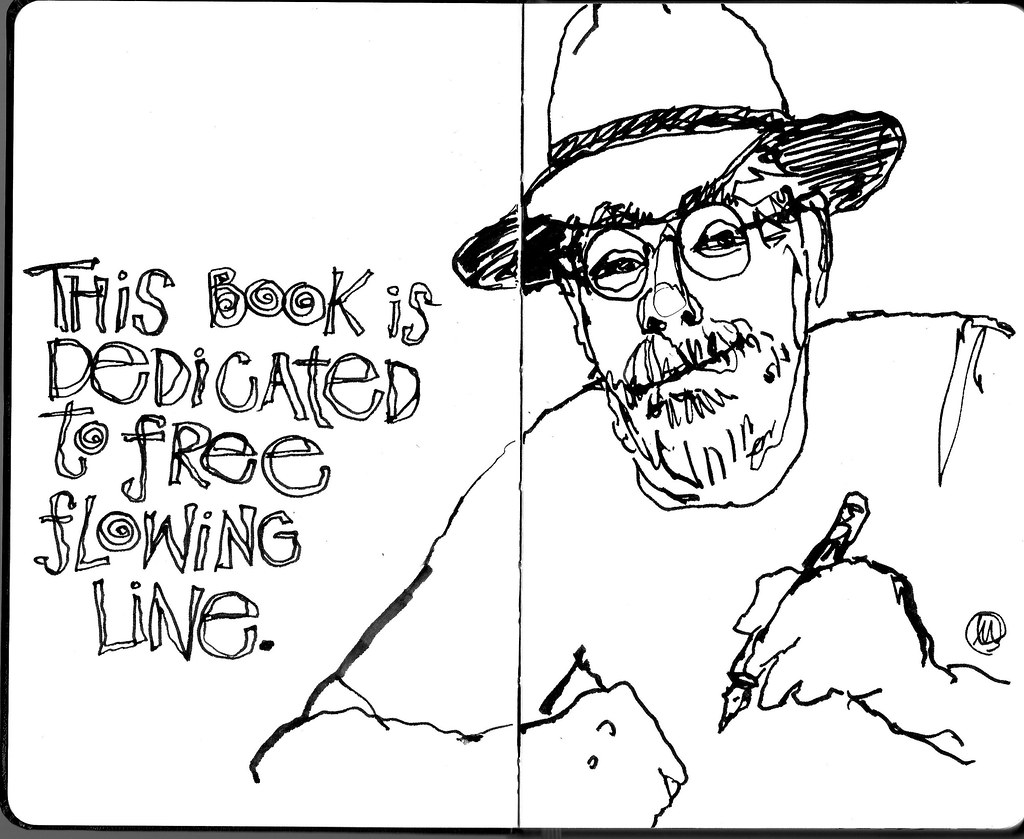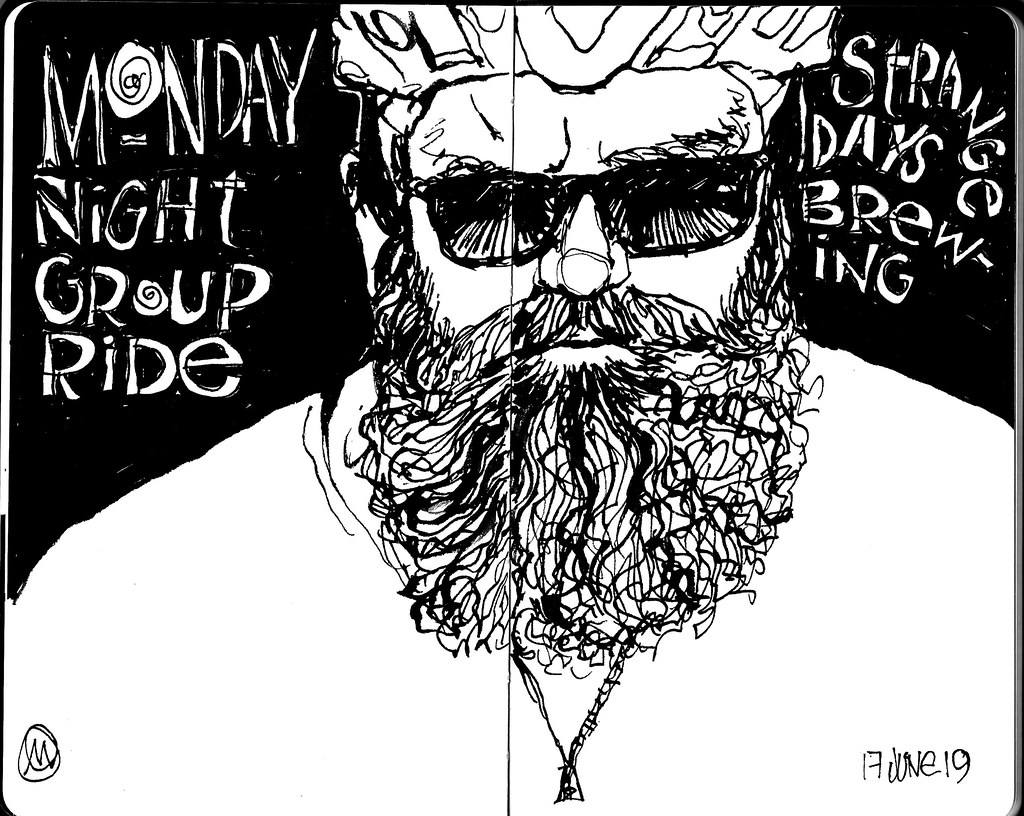
18 June, 2019.
I began a new sketchbook a couple days ago. No, I hadn’t filled the Stillman and Birn book I’ve been working in yet. This is a sort of side project that occurred to me in the moment, a thought of “embracing imperfection.”

For this book, I’m placing severe restrictions on myself: It’s entirely in ink, black and white; it’s entirely drawn with my bent-nib fountain pen, which allows me to create a lot of line variety; no pencil lines are allowed! I think I referred to this in my Instagram post as “no pencil parachute.” I rather like that turn of phrase.

I must have needed this shift because my first couple days have been prolific. I’ve begun with people and things I encountered while wandering around downtown Kansas City and the Crossroads Arts District on Fathers Day. A sort of theme seems to be emerging, so I’m going to remain open to see if this is only a visual thesis, or if a narrative thread materializes as well.

But back to the idea of embracing imperfection, it’s not the first time I’m dedicated a sketchbook to a self-imposed restriction. I’ve made others in which I challenged myself to work directly with a pen. I hatehow making art often devolves into a search for perfection: perfect lines, perfect shapes, perfect proportions, etc. It’s a crippling attitude for anyone new to drawing, and frankly it’s just as crippling to seasoned sketchers. So rather than seeking perfection, I’m interested in just letting my pen be the response mechanism to chance encounters of the vernacular sort.

I noticed that this approach almost immediately took on a “comic book” look and feel. It’s not only very graphic, but some of the distortions feel at home in a graphic novel environment as well. My choice to weave words and commentary into a page reinforces that characteristic.

One of the idiosyncrasies of urban sketching is that drawings generally provide a sense of context, of surroundings. I particularly like that aspect of urban sketching. It’s interesting to me that a seriesof drawings from a place doesn’t always need to provide a visual background to be part of the series. Sometimes the lack of background speaks much louder, yet at the same time still seems to be one with the landscape presented in those images that appear sequentially before and after.

As each sketch emerges, the book takes on a life of its own. “Embracing imperfection” means allowing myself permission to just let mistakes happen. Not worrying about making “perfect” drawings pushes me to play with the pen: some things work, other things don’t. But interestingly, there’s a holistic impression becoming apparent to me that I find very appealing.

Some drawings start out as simple subjects. I’m not really sure where I’m going with them: they sort of emerge. And the simplest of subjects, in some cases, suddenly bloom into more complex compositions. I can’t explain or even predict how this is happening, but it’s exciting and a bit terrifying all at the same time. It’s a lot like playing a jazz solo – I know the tune and I know the instrument and I know the key, but I don’t always know where I’m going to go next. In fact, the path – defined as it is by instrument and tune and key – is still improvisational, an invention. And while my drawings are of a place and time, still there is inventiveness and decision in what to include and what to leave out. Listen to Miles Davis sometime. His genius is not so much about what he played, but in what he left out. I like that sort of inspiration.

I did ask Joe to pose for me. Everything else so far has been chance encounters; this was a purposeful sketch. But Joe, this burly, bearded cyclist, just felt like part of the tapestry that is emerging, so I rolled with it.
Embracing imperfection. Normally I would clean up the scans I post here by cropping off the edges of the book, maybe cleaning up the gutter line. After my first scan I realized that it wasn’t necessary to go through that exercise with these drawings. I’ve yet to decide if it’s a precious thought or not, but it occurs to me that leaving those margins is reminiscent of the way that Richard Avedon kept the film frame on his incredible black and white 4 x 5 portraits of the West. The crude frame became an important part of the composition. Perfectly imperfect, in fact.
__________________
Drawn directly with a bent-nib fountain pen in a Moleskin journal; some solid fills were made with a Pitt “Big Brush” pen.
I think you’re in the process of hitting a series of home runs. An artist friend of mine years ago gave me this sage advice: if you can’t fix it, feature it. Some brilliant art came out of that.
This concept really appeals to me. I think much artistic growth and freedom can come from embracing imperfections. I need to put this into practice as well. I will be looking forward to seeing more from this series!
I firmly believe we place far too much value on the concept of “perfection;” being “the best” at something has become a goal that outpaces the journey. I argue that the experience and the process is a legitimately better objective.
Well said, I definitely need to remind myself of this from time to time.
Ha! I give myself reminders about every 15 or 20 minutes.It’s far too easy to fall back into the “perfection” trap.
This sounds like a great project.
Beautiful sketches
I love it. I do my poetry in that way, abstract and imperfect. leaving the person to guess, or fill their own lines in. when I draw, it strangely has to become perfect. I embrace it, but it does not embrace me back! not yet, anyway. 🙂